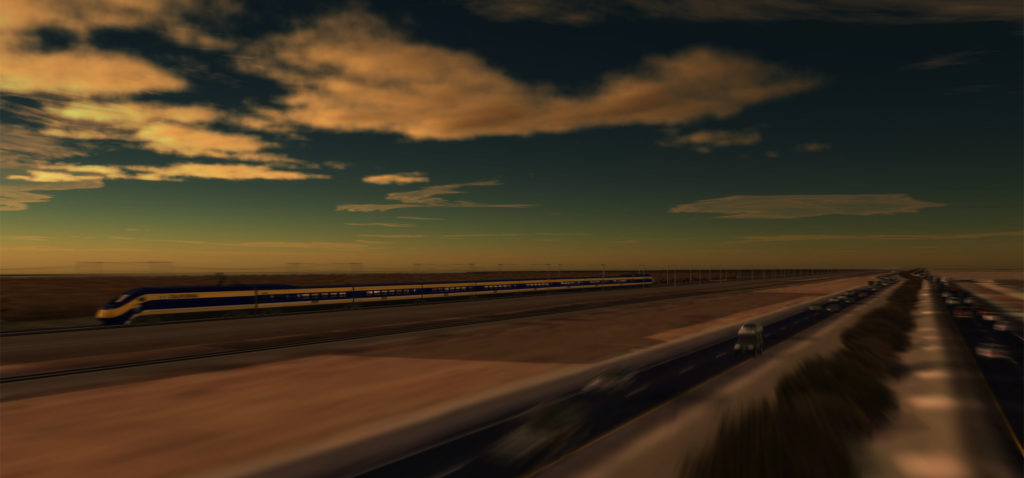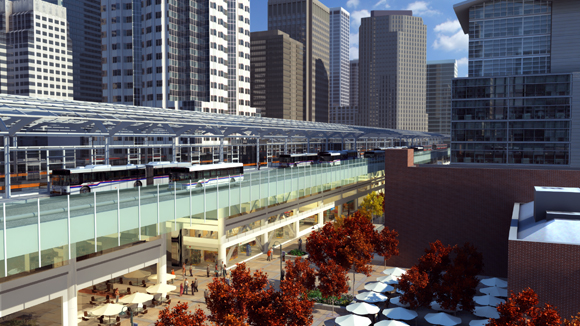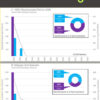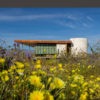
When the American Society of Civil Engineers (ASCE) Report Card gave California’s infrastructure a “C-” grade, it noted that the state’s annual investment needs are $37 billion, just to bring the existing infrastructure up to par. Just consider our roadways as one example of how our state’s infrastructure already is stressed to inadequacy. In Los Angeles, the most congested region in the country, the average commuter spends 70 hours a year sitting in traffic. This translates to billions of dollars in lost productivity and unnecessarily contributes millions of tons of greenhouse gasses into the environment. And with California’s population projected to increase from 38 million to 48 million people by 2025, we not only need to address the immediate funding challenges, but we also must make long-term investments in our public infrastructure.
This critical need to upgrade California’s infrastructure is presenting opportunities for architects and engineers to design the next generation of public facilities and shape the way millions of Californians live for years to come. The good news is that elected officials have recognized this problem and have begun to identify solutions that will provide much-needed funding for modernizing the state’s infrastructure, as well as enacted new laws that will help California better plan for its growth.
On the funding side, the federal stimulus package is providing new prospects for architects and engineers to showcase their talents. In California, the state is competing for a portion of the $8 billion in stimulus grants earmarked for high-speed rail projects. This money will support the engineering, design and construction of the state’s proposed high- speed rail system, including the stations and other facilities that architects will have a hand in designing.
In recent years, California voters also have passed a number of ballot initiatives and dedicated tax measures to fund a variety of public infrastructure projects, including the construction of new rail and transit lines, water projects and education and health care facilities—all of which require the work of architects.
In addition, Assembly Bill 32 (California Global Warming Solutions Act of 2006; see http://www.arb.ca.gov/cc/factsheets/ab32factsheet.pdf) will have tremendous implications for what architects will design, how they will design it, and how they will work with engineers to create aesthetically pleasing solutions.
As an engineer, I have tremendous respect for the architectural profession. Architecture has a dimension of art; it brings an aesthetic dimension that helps take the hard edge off engineering solutions. An engineer may look at the task of designing a transportation center in technical terms, whereas an architect complements this view by looking at it in a way that invites people to use the facility and helps it blend in with the surrounding environment.
If we are going to successfully meet the challenges of designing California’s future, architects and engineers must continue to develop long-term, integrated solutions. This means fulfilling technical expectations in a way that supports the larger needs of the community—promoting resource conservation, infill, and urban centers, while providing visually appealing solutions.
Through their designs, architects can help a project capture the hearts and minds of its stakeholders. At San Francisco’s TransBay Terminal, the public is the largest stakeholder, and we are working to design a facility that will serve as a major transit hub, as well as be the architectural centerpiece of an urban renewal. Regardless of the size of the project, architects can shape public perception and help their clients achieve their goals.

If you’ve flown into the new Hong Kong airport, you will know what I mean. The original design, by the Hong Kong Airport Authority, was a boxy, functional building. A very clever architect—Sir Norman Foster—submitted a design to fulfill the same requirements, but said that for the same price he could design a terminal reminiscent of a beautiful bird. This is an example of how architects can work with engineers to design public facilities that will be a source of pride and admiration. One only needs to look back to the work of the Depression-era construction projects, such as Boulder Dam (built by URS, along with Bechtel and Kaiser), which continue to serve as national treasures.
Just as our predecessors defined California through the design of our modern infrastructure, we will have the opportunity to shape the future through many of the projects we will be working on. The architect who can develop aesthetically pleasing solutions within the scope of the project’s priorities and limitations does a service not only to the owner, but also to society.
Author Thomas W. Bishop is Senior Vice President of URS Corporation, a leading provider of engineering, construction and technical services for public agencies and private sector companies around the world, with more than 45,000 employees in a network of offices in more than thirty countries. A URS joint venture is providing planning and engineering services for one third of the proposed 800-mile, high-speed rail system from San Francisco and Sacramento to San Diego; URS also leads the multidisciplinary project management team for San Francisco’s TransBay Terminal. Other transit projects in California include San Diego’s Mission Valley Light Rail Transit, Santa Clara Valley’s Measure A/B Rail Expansion Program, and BART San Francisco Airport Extension Stations and Parking Structures.
Originally published 4th quarter 2009 in arcCA 09.4, “Infrastructure.”





